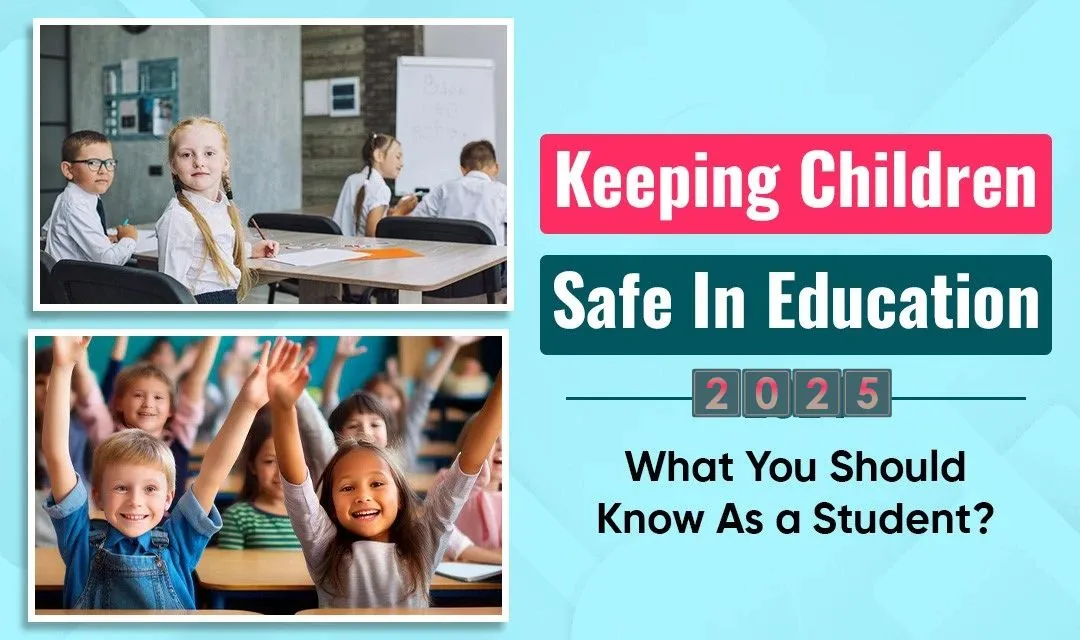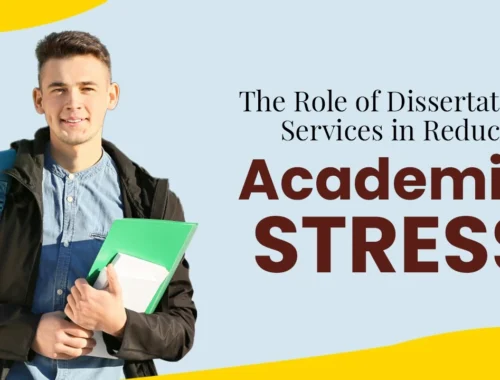
Keeping Children Safe in Education 2025 – What You Should Know as a Student?
Table of Contents
ToggleKeeping Children Safe in Education 2025: What Every Student Should Know
Protecting children is more important than ever in today’s evolving educational landscape, according to the statistics by GOV.UK, 400,000 children (1 in every 30) need protection against physical or mental abuse in England. Therefore, Keeping Children Safe in Education 2025 (KSSIE 2025) was introduced to protect young adults.
This framework ensures that schools take the necessary steps to form a safe learning atmosphere for students. If you want to learn about Keeping Children Safe in Education, this article is for you. Here, the experts of The Academic Papers UK will share what this module is and what recent changes have been made to it.
Let’s start by understanding the KCSIE framework.
Understanding of Keeping Children Safe in Education
Keeping Children Safe in Education is a legal document that provides statutory guidance that outlines the legal practices to protect children under the age of 18. Further, this framework ensures that educational institutes take essential steps to safeguard the students.
KCSIE aims to make sure that every school or college protects children in the following ways:
- Identifying the signs of abuse or mistreatment.
- Ensuring that all the educational staff and team members are trained enough to take necessary steps when reporting any abuse.
- Fostering a safe environment that allows students to thrive mentally and emotionally.
What Are the New Changes to KCSIE 2025?
The first edition of Keeping Children Safe in Education was first introduced in 2014. Since then, six versions of this statutory document have been released. The latest version came into force in September 2024, and it is the modified version of KCSIE 2023.
Keep reading to explore what amendments have been made in the previous version.
1. Safeguarding the Information for all Staff
The prime change that is being made in Keeping Children Safe in Education is the amendment of the definition of ‘Safeguarding and Promoting the Welfare of Children’. This change is particularly an amended version of ‘Working Together to Safeguard Children 2023’.
The key points of this part are the following:
- Provide support and help to children as soon as the issue emerges.
- Work for the well-being of students and prevent impairment in their mental and physical health.
- Protect children from mistreatment, whether in school or at home.
- Provide effective care to ensure that students grow even in a challenging environment.
- Work for the welfare of the children and get the best outcomes.
This section further addresses some additional issues, which are the following:
● Early Help:
It is an additional bullet point in the first section of the KCSIE 2024, which is the amendment of the KCSIE 2023 to reflect ‘Working Together to Safeguard Children 2023’. This section particularly focuses on young adults or children who are:
- Frequently missing from school or home.
- Gone through various suspensions or got warnings from schools or colleges.
- Suffering from parental offending because their parent or career is in custody.
● Abuse and Neglect:
Abuse and neglect are not major changes, but they are essential to know about. It is a modified version of the term ‘abuse, neglect, and exploitation. The main objective of this point is to educate the staff so they:
- Understand that students can also be in danger inside or outside the schools/colleges.
- Evaluate the circumstances that overlap because stand-alone events do not occur all the time.
● Safeguarding Issues:
This point is introduced to address the issue of the absence of education. It emphasizes educating the staff to take necessary steps to spread awareness of the importance of education.
2. The Management of Safeguarding
The prime aim of this section is for data protection by compelling educational institutions to take strategic responsibility. It also guides educational institutions in making educational safeguarding arrangements and ensures that they perform their duties under the legislation.
Additionally, this part ensures the compliance of the following amendments:
● Data Protection Act 2018
This paragraph contains the data protection guidance for trustees or administration to assist them in ensuring compliance with the data protection law and ways to improve the data protection policies. It also emphasizes protecting personal information and preventing data breaches.
● Alternative Provision
This is the most obvious point, but it has been formally added to the Keeping Children Safe in Education 2024 version. This section states that it is mandatory to give the alternative provision provider to the students to safeguard their rights and mental well-being.
● Work for Students’ Welfare
This paragraph focuses on taking care of students’ needs and social transitioning that can significantly impact their mental health and emotional well-being. It also highlights the importance of the special needs of students, such as some suffering from autism or hyperactivity disorder. Schools are advised to work with parents so they work together for the betterment of students. Additionally, teachers can teach some educational hacks to students to improve their well-being.
● Online Safety
In the digital world, it is essential to safeguard students from harmful material. A holistic and detailed online safety approach is required to guide pupils, instructors, and trustees to use the technology and online platforms for information sharing.
Online safety is a broad topic; however, it is categorized into four main areas of risks, which are the following:
- Content: This risk includes being harmed by inappropriate, illegal, or harmful content such as fake news, racism, or more.
- Conduct: Conduct involves the online behavior that harms or damages the well-being of the users
- Contact: Involves harmful interactions with other online users like peer-to-peer pressures, commercial advertising, or more.
- Commerce: Online gambling and financial scams are included in this type of online risk,
3. Child-on-child Abuse
This part of the statutory guidance discusses how the teachers, trustees, or administrations should respond to child-on-child abuse. This abuse may happen outside/inside the boundaries of the educational institutions. Schools and colleges must be aware of the following things to tackle this issue effectively.
- Show zero tolerance for child-on-child abuse and instantly take action against it.
- Recognizing, acknowledging, and understanding the scale of the harassment.
- Never accepted the physical abuse, even if it occurred in fun.
So, you have an overview of the Keeping Children Safe in Education 2025 document. Now, have a look at some essential steps that schools or colleges can take.
What Are the Next Steps to Take in Light of KCSIE 2024?
In light of KCSIE 2024, it is advised that educational institutions take the necessary steps to improve their educational policies and foster an effective learning environment, such as:
- Every school/college must introduce a new policy for education, which is designed according to this statutory guidance document so it can work for safeguarding the mental and emotional well-being of children, especially those under 18.
- The training of the staff is also essential to ensure this safeguarding. With this, the educational organizations must update all the staff about the new updates in the KCSIE module.
- Educational bodies should keep an eye on the implementation of the KCSIE and evaluate its outcomes so that necessary steps are taken to achieve maximum results.
With this, many instructors are expected to assign assignments on the KCSIE 2025 module. It will help them judge if students are aware of the guidance and able to implement it when they enter their professional careers in the educational field. In this regard, for additional support, students can approach UK-based assignment writing companies to complete such tasks successfully.
Conclusion
Keeping Children Safe in Education 2025 is a guiding document designed to spread awareness and provide assistance for safeguarding young adults under the age of 18. The main objective of this document is to prevent harm that can damage the mental and emotional well-being of pupils in the educational setting.
Due to the importance of safeguarding students, we have shared a brief overview of the KCSIE 2025 module to help the student uncover the key points of this document. From safeguarding information for the staff to child-on-child abuse, we have covered everything. With this, we have discussed some essential steps that can be taken for effective implementation of these guidelines.
Author Bio
Charles S., an experienced assignment writer, advocates for children’s rights to create a safer world for every child. He addresses the social issues that most students face during their educational careers and tries to combat them by using his voice to foster equality for all. Further, he has written educational documents to spread awareness about the mental health of children.
FAQs: Keeping Children Safe in Education
Keeping children safe is a top priority for schools, colleges, and childcare settings. The “Keeping Children Safe in Education” document offers comprehensive guidance to ensure that all staff are equipped to recognize and respond to safeguarding concerns effectively. Below are some frequently asked questions to help clarify its key aspects.
1. What is the purpose of “Keeping Children Safe in Education”?
The document provides guidance to schools and colleges in ensuring the safety and well-being of children, setting clear standards for safeguarding practices.
2. Who is responsible for following this guidance?
All school staff, including teachers, support staff, and volunteers, are required to follow the guidelines outlined in “Keeping Children Safe in Education.”
3. What steps can schools take to promote a culture of safeguarding?
Schools should implement clear policies, provide ongoing training, encourage open communication, and prioritize children’s safety in every decision.
4. How often is the guidance updated?
The guidance is updated annually by the Department for Education to reflect new regulations and best practices.
5. What should a staff member do if they suspect a child is at risk?
Staff must immediately report their concerns to the designated safeguarding lead (DSL) in their school or college.
6. What training is required for school staff?
All staff must undergo regular safeguarding training to stay informed about the latest procedures and responsibilities.
Tuba Hassan
Hi, I'm Tuba, a digital marketer and content writer with several years of experience in my field. My expertise in Search Engine Optimization (SEO) and Content Writing has helped me create engaging and effective content that resonates with my target audience. I’m passionate about helping businesses grow and thrive by developing and executing marketing strategies that drive growth and increase revenue.
You May Also Like

Benefits of Implementing Knowledge Management Software in Organizations
3 June 2025
HCOOCH CH2 H2O: Structure, Properties, and Applications
13 February 2025

